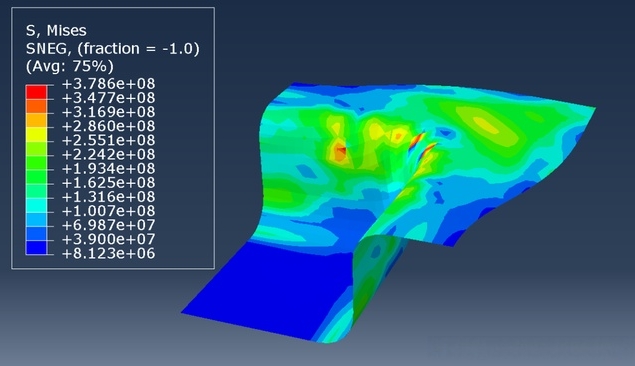
 English
English  Español
Español Português
Português русский
русский Français
Français 日本語
日本語 Deutsch
Deutsch tiếng Việt
tiếng Việt Italiano
Italiano Nederlands
Nederlands ภาษาไทย
ภาษาไทย Polski
Polski 한국어
한국어 Svenska
Svenska magyar
magyar Malay
Malay বাংলা ভাষার
বাংলা ভাষার Dansk
Dansk Suomi
Suomi हिन्दी
हिन्दी Pilipino
Pilipino Türkçe
Türkçe Gaeilge
Gaeilge العربية
العربية Indonesia
Indonesia Norsk
Norsk تمل
تمل český
český ελληνικά
ελληνικά український
український Javanese
Javanese فارسی
فارسی தமிழ்
தமிழ் తెలుగు
తెలుగు नेपाली
नेपाली Burmese
Burmese български
български ລາວ
ລາວ Latine
Latine Қазақша
Қазақша Euskal
Euskal Azərbaycan
Azərbaycan Slovenský jazyk
Slovenský jazyk Македонски
Македонски Lietuvos
Lietuvos Eesti Keel
Eesti Keel Română
Română Slovenski
Slovenski मराठी
मराठी Srpski језик
Srpski језик
Control method for springback of stamping parts
2023-09-19
The best time to reduce or eliminate rebound is during the product design and mold development stages. By using analysis to accurately predict rebound, optimize product design and process, and reduce rebound by utilizing product shape, process, and compensation. During the mold debugging stage, it is necessary to strictly follow the guidance of process analysis to test the mold. Compared with ordinary SE analysis, the workload of rebound analysis and correction has increased by 30% to 50%, but it can greatly shorten the mold debugging cycle.

In addition, the current common process measures for solving sheet metal stamping rebound are as follows:
1. Correct bending
Correcting the bending force will concentrate the impact force in the bending deformation zone, forcing the inner layer of metal to be squeezed. After correction, both the inner and outer layers will be extended. After unloading, the rebound trend of the two squeezed areas can be reduced by offsetting each other.
2. Heat treatment
Annealing before bending to reduce its hardness and yield stress can reduce rebound, while also reducing bending force, and then hardening after bending.
3. Excessive bending
In bending production, due to elastic recovery, the deformation angle and radius of the sheet metal will increase. It is possible to reduce rebound by using a method where the deformation degree of the sheet metal exceeds the theoretical deformation degree.
4. Hot bending
By heating and bending, selecting the appropriate temperature, the material has enough time to soften, which can reduce the rebound amount.
5. Tensile bending
This method applies tangential tension while bending the sheet, changing the stress state and distribution inside the sheet, and keeping the entire section within the plastic tensile deformation range. After unloading, the rebound trends of the inner and outer layers cancel out each other, reducing rebound.
6. Local compression
The local compression process increases the length of the outer sheet by reducing the thickness of the outer sheet, so that the rebound trend of the inner and outer layers offsets each other.
7. Multiple bends
Divide the bending process into multiple stages to eliminate rebound.
8. Inner fillet passivation
Compress from the inside of the bent part to eliminate rebound. When the U-shaped plate is bent, this method is more effective due to symmetrical bending on both sides.
9. Transforming whole drawing into partial bending forming
Part of the part is bent and then stretched to reduce rebound. This method is effective for products with simple two-dimensional shapes.
10. Control residual stress
During drawing, a local convex hull shape is added to the surface of the tool, and the added shape is eliminated in the subsequent process to change the residual stress balance in the material and eliminate rebound.
11. Negative rebound
When machining the surface of the tool, try to cause negative rebound of the sheet metal. After the upper mold returns, the workpiece reaches the required shape through rebound.
12. Electromagnetic method
By using electromagnetic pulses to impact the surface of materials, shape and size errors caused by rebound can be corrected.


